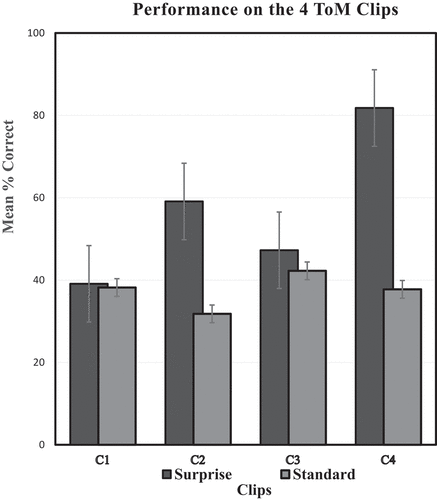Figures & data
Table 1. Summary of mean ToM performance according to ToM index and gender
Figure 1. The Surprise index always resulted in higher performance than the standard verbal/pointing index. Also, the levels for the Surprise index varied as a function of the plausibility of the location searched and retrieval outcome.

Figure 2. The biggest difference between the bar for the likely situation compared to the corresponding bar for the unlikely situation did not occur when participants were reasoning about others’ minds (i.e., search), but occurred instead when considering where the object should have been really (i.e., outcome).

Table 2. Pearson’s pairwise correlations of ToM
Table 3. Summary of predictors of ToM-explanations
Table 4. Summary of surprise Sub-Tasks as predictors of ToM-Explanations
Data availability statement
The dataset on which this article is based can be obtained from the first author upon reasonable request. [email protected]
